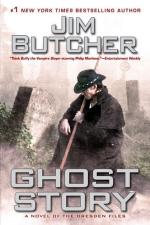|
This section contains 4,029 words (approx. 14 pages at 300 words per page) |

|
SOURCE: Makino, Yoko. “Lafcadio Hearn's ‘Yuki-Onna’ and Baudelaire's ‘Les Bienfaits de la Lune.’” Comparative Literature Studies 28, no. 3 (summer 1991): 234-44.
In the following essay, Makino presents an analysis of Hearn's “Yuki-Onna,” noting its inspirational debt to one of Baudelaire's poems.
“Yuki-Onna” (“The Snow-Woman”) is one of the best known and popular stories of Lafcadio Hearn. Although included in Kwaidan (1904), a collection of Japanese weird tales completed in the year of his death, the story of “Yuki-Onna” is not only horrifying but also beautiful and fantastic.
 Lord Sadanobu being stalked by a demon while on his way to see the emperor, from an early ghost story series called Wakan hyaku monogatari, (“One Hundred Ghost Stories of China and Japan.”)
Lord Sadanobu being stalked by a demon while on his way to see the emperor, from an early ghost story series called Wakan hyaku monogatari, (“One Hundred Ghost Stories of China and Japan.”)While we have a definite original text for Hearn's other retold ghost stories, we have none for “Yuki-Onna.” In his foreword to Kwaidan, Hearn says that he developed the tale from...
|
This section contains 4,029 words (approx. 14 pages at 300 words per page) |

|


